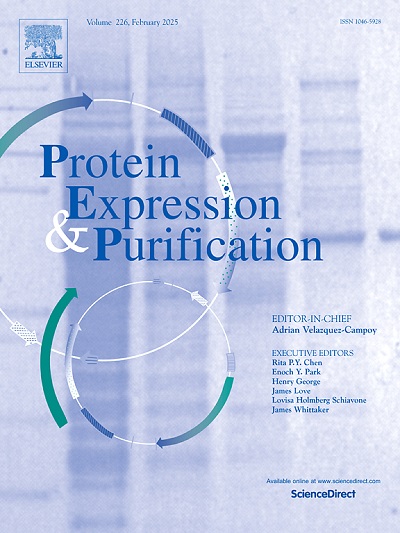白腐菌平菇和彩板菌产漆酶的优化。
IF 1.2
4区 生物学
Q4 BIOCHEMICAL RESEARCH METHODS
引用次数: 0
摘要
漆酶主要存在于细菌、真菌、植物和昆虫中,它们在工业和生物技术上有许多应用。漆酶被用于制药、食品、纸浆和造纸工业,它们在水下培养条件下的成本效益生产具有重要的商业价值。尝试在异源系统中过表达三种色板菌漆酶同工型。重组TV漆酶要么在大肠杆菌中不溶,要么在毕赤酵母中表达不良。因此,研究人员利用两种非重组白腐菌Pleurotus ostreatus (PO)和Trametes versicolor (TV)开发了一种深层发酵工艺,以生产这些具有重要商业价值的漆酶。以糖蜜和玉米浆(CSL)分别为碳源和氮源,以2,5-二甲醚、木质素磺酸钠和硫酸铜为诱导剂,使整个过程具有经济性。漆酶活性在20 d内达到最大值374,000 U/L(或374 kU/L)。当在45°C下评估时,TV漆酶在稳定性方面优于PO漆酶,稳定性是生物质脱木质素的关键因素。TV漆酶在45°C下表现出比PO漆酶更好的稳定性,使其成为生物质预处理应用的首选。我们演示了这种漆在两个工业应用中的使用:1。木质纤维素解聚:在扫描电子显微镜下观察到,用平菇漆酶处理稻草导致明显的结构扭曲。2. 工业废水处理:靛蓝胭脂红和Remazol Brilliant Blue染料在一夜之间实现了显著的脱色,当与Trametes versicolor漆酶孵育时,脱色率分别高达70%和74%。本文章由计算机程序翻译,如有差异,请以英文原文为准。
Optimized Laccase production from the white rot fungi Pleurotus ostreatus and Trametes versicolor
Laccases are predominantly found in bacteria, fungi, plants, and insects, and they have numerous industrial and biotechnological applications. Laccases are utilized in the pharmaceutical, food, pulp, and paper industries, and their cost-effective production in submerged culture conditions is of significant commercial value. Attempts were made to overexpress three laccase isoforms from Trametes versicolor (TV) in heterologous systems. Recombinant TV laccases were either insoluble in E.coli or poorly expressed in Pichia pastoris. Hence a submerged fermentation process was developed to produce these commercially important laccases from two non-recombinant white rot fungi: Pleurotus ostreatus (PO) and Trametes versicolor (TV). Molasses and corn steep liquor (CSL) were used as carbon and nitrogen sources, respectively, while 2,5-xylidine, sodium lignosulfonate, and copper sulfate were used as inducers, making the entire process economical. Laccase activity reached a maximum of 374,000 U/L (or 374 kU/L) in 20 days. When evaluated at 45 °C, TV laccase outperformed PO laccase in terms of stability, a crucial factor in the delignification of biomass. TV laccase demonstrated superior stability over PO laccase at 45 °C, making it the preferred choice for biomass pre-treatment applications. We demonstrate the use of this laccase in two industrial applications.
1. Lignocellulose Depolymerization: Treatment of rice straw with Pleurotus ostreatus laccase resulted in visible structural distortion, as observed under a scanning electron microscope.
2. Industrial Wastewater Treatment: Significant decolorization of indigo carmine and Remazol Brilliant Blue dyes was achieved overnight, with reductions of up to 70 % and 74 %, respectively, when incubated with Trametes versicolor laccase.
求助全文
通过发布文献求助,成功后即可免费获取论文全文。
去求助
来源期刊

Protein expression and purification
生物-生化研究方法
CiteScore
3.70
自引率
6.20%
发文量
120
审稿时长
32 days
期刊介绍:
Protein Expression and Purification is an international journal providing a forum for the dissemination of new information on protein expression, extraction, purification, characterization, and/or applications using conventional biochemical and/or modern molecular biological approaches and methods, which are of broad interest to the field. The journal does not typically publish repetitive examples of protein expression and purification involving standard, well-established, methods. However, exceptions might include studies on important and/or difficult to express and/or purify proteins and/or studies that include extensive protein characterization, which provide new, previously unpublished information.
 求助内容:
求助内容: 应助结果提醒方式:
应助结果提醒方式:


